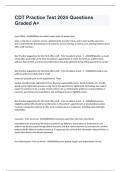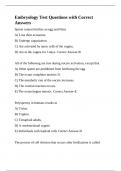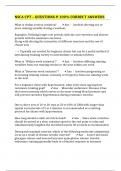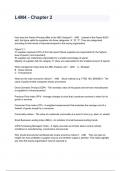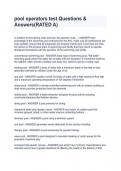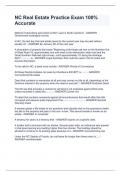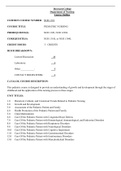Exam (elaborations)
CDT Practice Test 2024 Questions Graded A+
- Course
- Institution
CDT Practice Test 2024 Questions Graded A+ Front Office - ANSWERShas the initial contact with the patient and plays a vital role in customer service, optimizing the provider's time, and in claim quality assurance. Don't underestimate the importance of customer service training, as well as cro...
[Show more]
